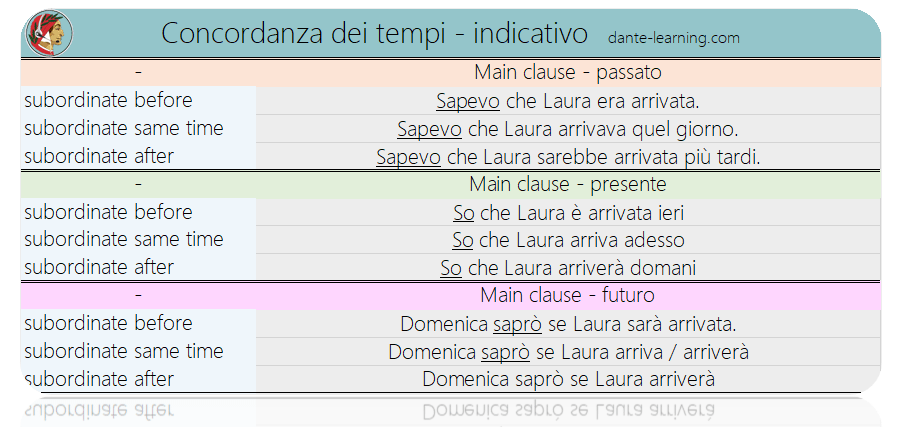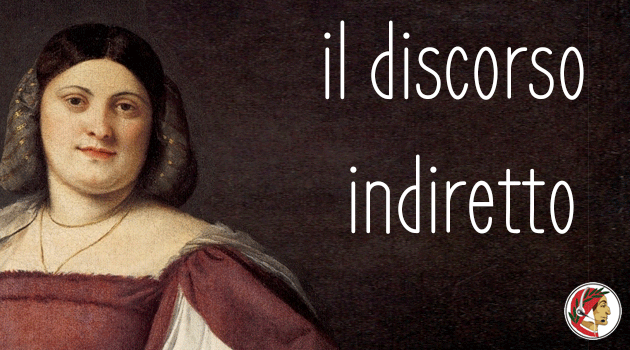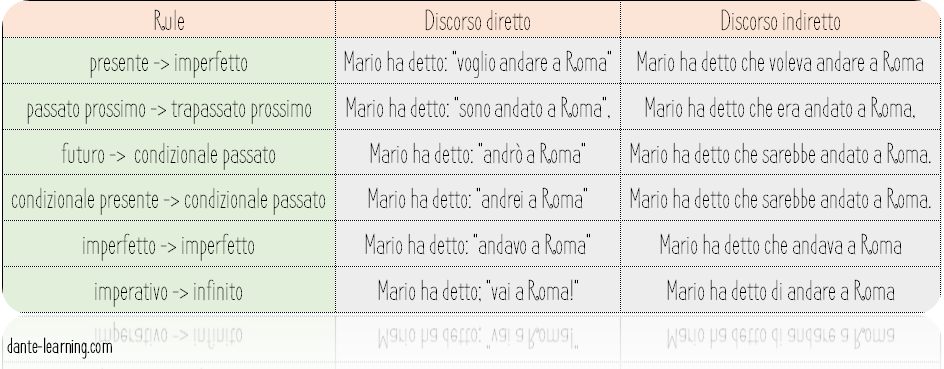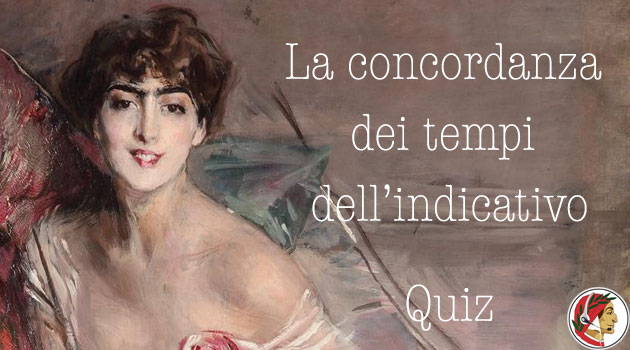The “concordanza dei tempi”, will help you to say what comes before, after or during another action. In Italiano!
Ciao a tutti.
The characters of the following very short story, made of two sentences, are you and your friend Laura. She comes to see you and you know that. We just have two actions: the fact that you know (your main clause) and the fact she’s coming (subordinate clause).
The relative position in time of these two actions can change the meaning of the story. You knew it in the past, you know it now or you will know it later (main clause); she comes before, at the same time or after you know it (subordinate clause).
Today you will learn the Italian sequence of tenses of the indicativo mood. Free quiz for everyone and premium podcast for members.
Let’s have a look.

These are all simple and valid examples. You have other options of course.
It depends on the sequence of the events you want to describe. Mind, the sequence must be logical. I can’t say for example Seppi che Laura è arrivata. The passato remoto (remote past) can’t happen after a passato prossimo (near past). In this case, the trapassato prossimo, “the past of the past” is the correct option. Seppi che Laura era arrivata. In the same spirit, If I knew that Laura would come later, I must use the condizionale composto “the future in the past”. Ho saputo che Laura sarebbe arrivata. The past progressive form is also possible (Laura stava arrivando)
- In other cases, for example, instead of saying sapevo for representing the passato, you can say ho saputo (passato prossimo) seppi (passato remoto) avevo saputo (trapassato prossimo). Same with arrivare.
- For the presente, you can also use the progressive form (Laura sta arrivando).
- The scenarios of the futuro are interesting too. You can go with the presente indicativo as a future tense and the futuro anteriore (a perfect tense) to represent a complete action in the future.
I’m sure that some examples will help you to understand the Italian sequence of tenses, la concordanza dei tempi dell’indicativo. Please try the quiz and listen to the podcast.
In this exercise, I will write the most common and logical verbs and tenses but, in some cases, not all the possible ones. If you have different solutions for the sentences or have doubts, feel free to ask. info@dante-learning.com
Alla prossima!
Quiz-summary
0 of 3 questions completed
Questions:
- 1
- 2
- 3
Information
LOADING QUIZ...
You have already completed the quiz before. Hence you can not start it again.
Quiz is loading...
You must sign in or sign up to start the quiz.
You have to finish following quiz, to start this quiz:
Results
Time has elapsed
Your score is 0 out of 0 points, (0)
| Average score |
|
| Your score |
|
Categories
- Not categorized 0%
- 1
- 2
- 3
- Answered
- Review
-
Question 1 of 3
1. Question
La concordanza dei tempi
Indicativo
Frase principale al presente
Seleziona le frasi corrette e controlla il tuo punteggio
Potrebbero essere tutte giuste o tutte sbagliate. Fai attenzione.
Correct
☑ Controlla le risposte giuste e finisci il quiz.↓↓↓
Incorrect
☑ Controlla le risposte giuste e finisci il quiz.↓↓↓
-
Question 2 of 3
2. Question
La concordanza dei tempi
Indicativo
Frase principale al passato
Correct
☑ Controlla le risposte giuste e finisci il quiz.↓↓↓
Incorrect
☑ Controlla le risposte giuste e finisci il quiz.↓↓↓
-
Question 3 of 3
3. Question
La concordanza dei tempi
Indicativo
Frase principale al presente, passato o futuro
Correct
☑ Controlla le risposte giuste e finisci il quiz.↓↓↓
Incorrect
☑ Controlla le risposte giuste e finisci il quiz.↓↓↓



